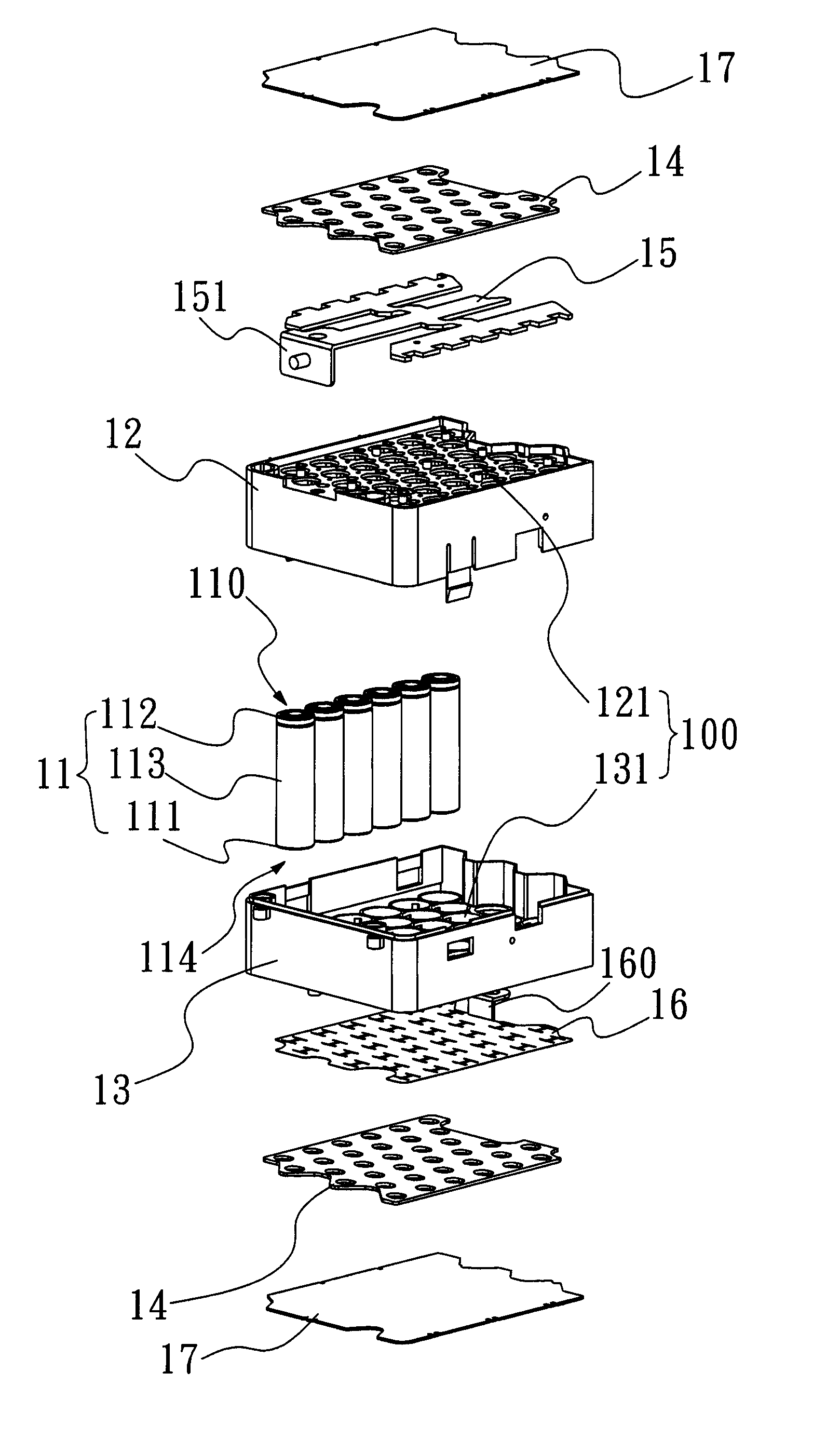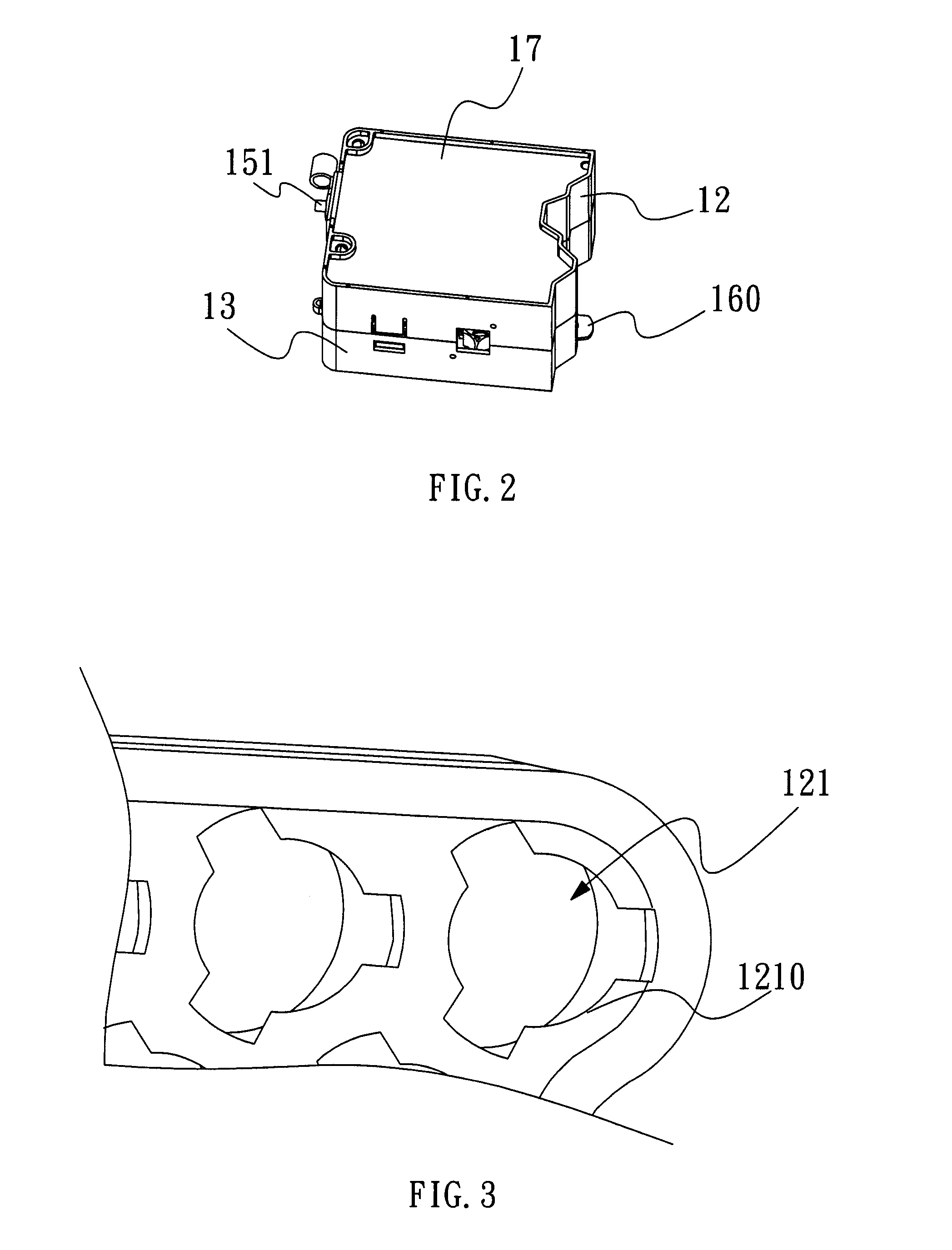Battery module with high thermal conductivity and assembling method thereof
a battery module and high thermal conductivity technology, applied in the manufacture of cell components, final product details, cell components, etc., can solve the problems of affecting the life of battery cells, affecting the safety of electric vehicles, and requiring a lot of battery cells for battery packs, so as to prevent accidental cell damage or short circuit, increase the safety of battery packs during operation, and improve the effect of thermal conduction path
- Summary
- Abstract
- Description
- Claims
- Application Information
AI Technical Summary
Benefits of technology
Problems solved by technology
Method used
Image
Examples
Embodiment Construction
[0036]The following description is provided to enable any person having ordinary skill in the art to make and use the invention, and is provided in the context of a particular application and its requirements. Various modifications to the embodiments will be readily apparent to those skilled in the art, and the principles defined herein may be applied to other embodiments and applications without departing from the spirit and scope of the invention. Thus, the present invention is not intended to be limited to the embodiments shown, but is to be accorded the widest scope consistent with the principles, features and teachings disclosed herein.
[0037]FIG. 1 and FIG. 2 show the battery module with high thermal conductivity according to the first preferred embodiment of the invention, which includes multiple battery cells 11, a primary retaining frame 12, a secondary retaining frame 13, a common electrode and a heatsink device. The common electrode is divided into a top common electrode 1...
PUM
| Property | Measurement | Unit |
|---|---|---|
| temperature | aaaaa | aaaaa |
| temperature | aaaaa | aaaaa |
| thermal conductivity | aaaaa | aaaaa |
Abstract
Description
Claims
Application Information
 Login to View More
Login to View More - R&D
- Intellectual Property
- Life Sciences
- Materials
- Tech Scout
- Unparalleled Data Quality
- Higher Quality Content
- 60% Fewer Hallucinations
Browse by: Latest US Patents, China's latest patents, Technical Efficacy Thesaurus, Application Domain, Technology Topic, Popular Technical Reports.
© 2025 PatSnap. All rights reserved.Legal|Privacy policy|Modern Slavery Act Transparency Statement|Sitemap|About US| Contact US: help@patsnap.com



